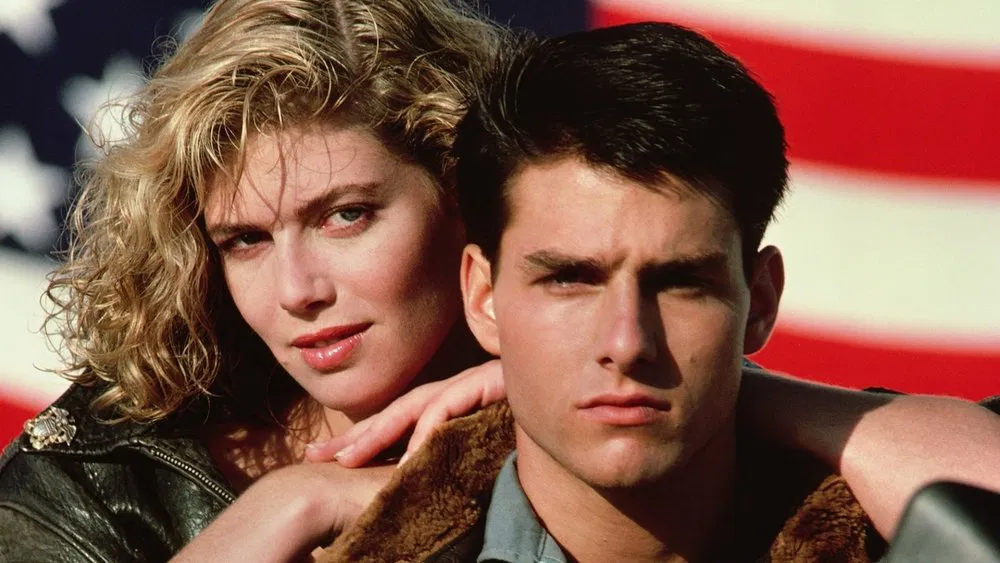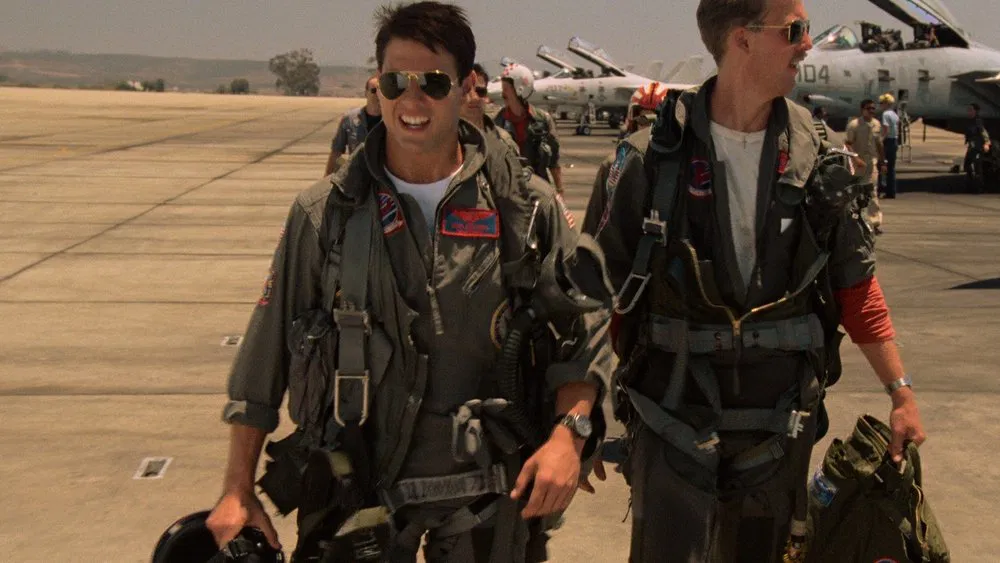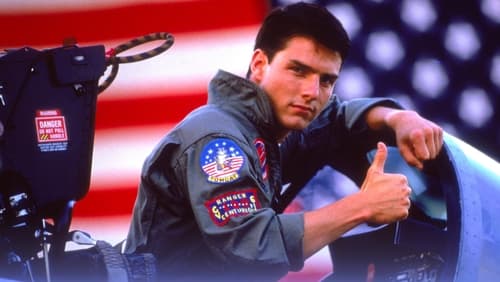Released on May 16, 1986, “Top Gun” initially faced criticism, with some labeling it as the “most expensive Navy recruitment ad ever” and an “overextended MTV for the F-14.” Critics saw it as a frivolous use of taxpayer money. Despite these early jabs, “Top Gun” soared at the box office, even being dubbed the “Star Wars” of Earth. The U.S. Navy experienced its highest recruitment rates since World War II, fueled by the film’s inspiring portrayal of naval aviation.

The film centers on Maverick (played by Tom Cruise), a Navy pilot driven by his father’s legacy. Through trials and tribulations, Maverick strives to overcome his inner demons and emerge as an exceptional pilot. While showcasing thrilling and demanding flight training, the film primarily focuses on Maverick’s journey from self-doubt to triumph. Tom Cruise’s portrayal of Maverick propelled him to stardom, cementing his image as the ultimate embodiment of the F-14 “Tomcat” fighter jet.
A Spectacle of Authentic Aerial Prowess
“Top Gun” benefited from significant support from the U.S. military, given its role as a recruitment tool. The Navy provided five active F-14 squadrons, including VF-1 “Wolfpack,” VF-51 “Screaming Eagles,” VF-111 “Sundowners,” VF-114 “Aardvarks,” and VF-213 “Black Lions,” along with eight active pilots. A-4 Skyhawks and F-5 Tigers (depicted as MiG-28s in the film) were sourced from the Miramar Air Station’s TOPGUN school, manned by actual flight instructors. Aircraft carriers like the USS Ranger, USS Enterprise, and USS Carl Vinson also made appearances, highlighting the film’s impressive hardware.
To capture breathtaking aerial combat sequences, the production team employed six cameras and a Learjet to keep pace with the Navy aircraft. Although F-14 flight time was expensive (approximately $7,000 per hour for fuel alone), the military’s support made the incredible scenes possible.

The filmmakers innovatively used the pilots’ unique roles to showcase cutting-edge aircraft and their remarkable flight capabilities, providing audiences with an unprecedented glimpse of these machines. Nearly an hour and a half of the two-hour film is dedicated to scenes of F-14s and other advanced fighters soaring through the skies. These gleaming jets engage in thrilling chases and formations against backdrops of mountains, sunrises, and sunsets. The cinematography team deserves immense credit for capturing these believable and breathtaking moments, using diverse angles and techniques to film the heart-stopping action. This approach appealed to both military enthusiasts and general audiences alike.
The F-14’s advanced radar system required a dedicated operator, hence the two-person crew. A pivotal scene depicts Maverick and his RIO (Radar Intercept Officer), Goose, experiencing an engine failure during training, leading to a crash. forced to eject, Goose tragically dies. This event profoundly affects Maverick, leading him to question his abilities and consider abandoning his dreams.
Tragedy Behind the Scenes
During filming, beyond the significant budget, the production experienced the loss of an F-14 and a pilot. On September 16, 1985, stunt pilot Art Scholl crashed while filming a flat spin maneuver in his F-14. Speculation suggests that a camera mounted on his plane might have disrupted the aircraft’s balance, preventing him from recovering. In subsequent reshoots (notably the scene depicting Goose’s death), models were used in place of the actual aircraft due to this tragic incident.
